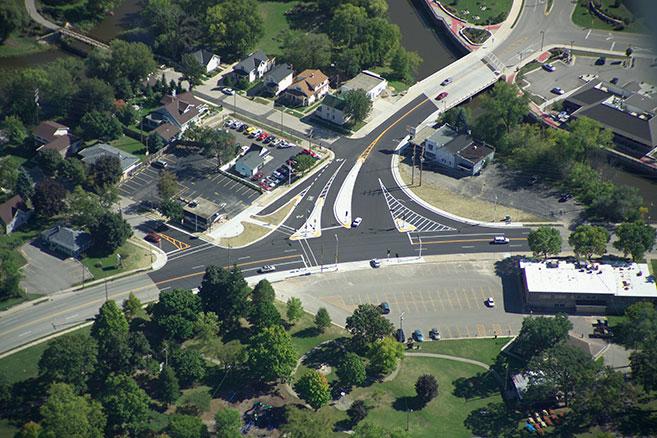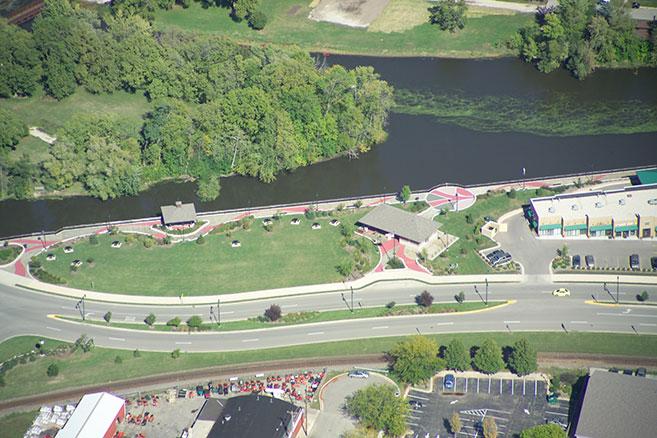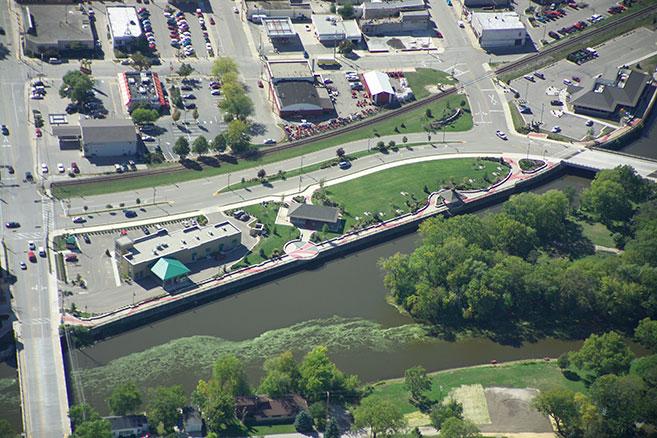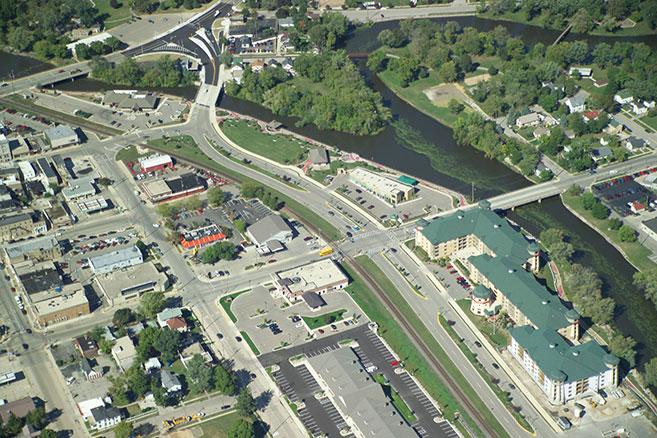City Transportation Planning
Municipal, Planning, Survey, Transportation | Wisconsin | Back
Challenge
Like many municipalities that have experienced growth and commercial success, the City of Burlington, Wisconsin, needed to transform its transportation system to improve safety, reduce congestion, and expedite the flow of traffic through the municipality. Leaders of Burlington wanted to improve roadways and add recreational facilities through a five-year development plan.
Solution
A key component of the plan included revitalizing three key arterials (STH 83, Bridge Street, and Commerce Street) into more modern configurations that would draw people into the heart of the historic city.
The five-legged intersection of STH 83 and Bridge Street, the busiest and most dangerous intersection in Burlington, was redesigned as a standard four-legged intersection by removing the fifth leg of the intersection from signalization.
The project also included the redevelopment of the riverwalk, the addition of public park space, and hotel developments.
Services Provided
- Agency coordination
- Public involvement
- Utility coordination
- Environmental document
- Storm sewer/drainage
- Stormwater management
- Sanitary sewer & water main
- Culverts
- TIF funding
- Asphaltic pavement
- Retaining walls
- Railroad overpass
- Sidewalk
- Street lighting
- Traffic signals
- Signing
- Pavement marking
- Landscaping
- Traffic control
Industries Covered
- Planning
- Survey
- Municipal
- Transportation
Results
Commercial trucks previously restricted to certain movements at the intersection can now make all turns without impeding oncoming traffic. Following these improvements, the Kapur team worked with City staff and businesses on the possibility of changing the downtown area from one-way streets to two-way streets.
Local trucking companies collaborated with the project team to perform trial runs of performing maneuvers needed in a two-way street scenario. Trials succeeded, which gave city leaders the confidence to make the change.
The two-way streets improved traffic flow and increased parking for downtown businesses. Accidents have decreased and traffic patterns are much improved.






